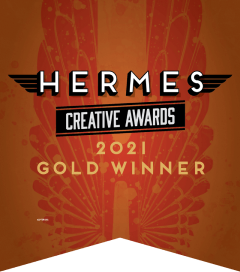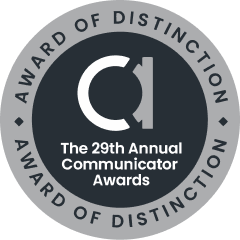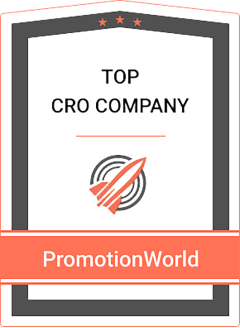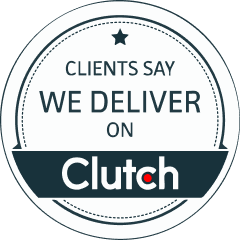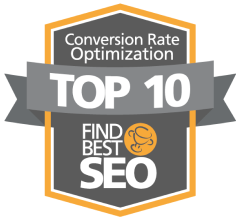Ashley Estilette | Chief Marketing Officer | Mitratech/h6>
There is something to being able to roll up your sleeves as a marketing leader and getting involved in the trenches with your team. Join us as we chat with Ashley Estilette, the Chief Marketing Officer of Miratech, about leadership styles, continuing education as a marketer, the evolution of event models in 2022, rebranding, and much more!
Transcript
[Laura]: All right. Welcome back everyone. The CMO’s Guide to Everything. I’m your host, Laura Cuttill. And today we have with us Ashley Estilette. She’s the chief marketing officer of Mitratech, which she’ll share more about that in a bit. She has 15 years of experience in leading business strategy and MarCom activities spanning the gamut of messaging, positioning PR, strategic planning, sales enablement, the whole nine yards. Her leadership style, I’ve heard people describe her as roll up your sleeves, which is a huge compliment; strategic and tactical.
The CMO’s Guide to Everything podcast is sponsored by Advertas, a digital marketing agency. Advertas helps B2B technology companies to target potential customers with laser accuracy and micro targeted messaging. The firm leverages a mix of creativity, strategy and digital technology to produce measurable results. To learn more, visit advertas.com. Hi Ashley.
[Ashley]: Hey, it’s so nice to be here. Thank you so much, Laura.
[Laura]: Of course. Of course. So, let’s start out a little bit and just orient our audience. What is Mitratech and who is your audience? Who are your customers?
[Ashley]: Great question. So, Mitratech is actually a company that’s been around for over 30 years in really the legal and risk management and compliance space. So our customers range from everyone from law firms that are leveraging a lot of our technologies, a lot of our solutions, all the way to big corporate companies. We’ve got some of the largest companies in the world that are customers. Really spanning every single vertical. So it’s an incredibly exciting company. Like a lot of companies, I think COVID accelerated digital transformation and that kind of thing. And so we’re definitely on the forefront of that. And so it’s been just a super exciting time to be at the company.
[Laura]: Excellent. So, what about your background prepared you for this role?
[Ashley]: So I always say that I was super fortunate. I had really great mentors all the way through my career, but one of the things that I had someone very early tell me was never say no. And while we’ve kind of realized that there has to be a balance to that, there was a lot of that that I took to heart throughout my career. And I got involved in a ton of different areas of marketing. I always made sure that if I didn’t have experience in PR, the next role that I kind of negotiated, I really wanted to get exposure into that if I didn’t have experience in kind of the demand gen or lead gen, that was then an area that I made sure I elbowed my way into.
And so I think just getting that broad exposure really made me a much stronger leader, being able to… You mentioned the roll up the sleeves mentality. I think it’s really tough to do that, if you don’t understand what your team’s really doing and you haven’t been in the trenches in the past. And so I think that’s really prepped me for being in kind of that broad leadership role because I have a great understanding of a lot of the different areas of marketing.
[Laura]: I think that’s such a good point. So, along those same lines, if you haven’t been in it, you can’t be the point of escalation. So I know a lot of times in my team, when people have issues and they have something they can’t solve, I’m the point of escalation, I’m the person they come ask. And if I’ve not done it, I couldn’t help them. But so I find myself a lot… It’s helpful to have that huge background of actually getting in there and doing the work, so that when people have issues, you can lead them and guide them in whatever the problem might be. So, good point, good point.
[Ashley]: Exactly.
[Laura]: So, we’ve all been through COVID at this point. That aside, we’re not going to talk about that anymore. How is it changing? How is life in 2022 going to be different?
[Ashley]: One of the things that. We’re sort of all in the thick right now of planning for 2022, right? It’s right around the corner. Top of mind for us and our team and what I’m seeing as a general trend in the market is obviously this acceleration into digital, right? The digital world came at us much faster than a lot of us expected, and it’s certainly here to stay. So, one of the things that we’re really looking at is this… I think this pivot from a in person or a digital, and then you have this middle ground that’s this hybrid. And one of the things I told my team as we were going through budgeting was don’t overthink the hybrid. So I think into ’22, don’t overthink the hybrid model.
There’s going to be some things that you’ve done, events you’ve planned that are just flat out not going to work digitally, or they’re not going to work in a hybrid model. I think that’s okay. I think, in COVID, we tried to force all this stuff into digital and at some point you just have to say, you know what, it’s just not a channel that’s going to work for this particular thing or this particular engagement. And so I think kind of level setting on that for 2022 is just going to be huge for our team and for marketing teams kind of broadly.
[Laura]: Have you found much of like an appetite in the marketplace for hybrid events? Have you found that to be popular, for lack of a better word? We had no options earlier, right? We were exclusively virtual, and now we’re beginning to have some options again. How would you gauge the appetite of the audience? Are we ready for hybrid yet? Is that working?
[Ashley]: It’s funny because we’ve had customers ask us. So we’ve got a, for example, a big user conference we’re going to do in August of ’22. And we’ve had customers ask us, what’s the virtual option. And when we kind of say, hey, we don’t think there’s going to be one. It’s exclusive. The half of the value that our customers are going to get from that event is by being in person. That’s kind of the point. We don’t really have anybody push back and say, oh, well, geez, I wish you would offer this virtual version for me. So I think you’re just going to find a really healthy mix into ’22 of some stuff going back in person, some stuff is going to stay virtual. And I think marketers just take a good, hard look at what your plans are and just don’t try to force them anymore.
[Laura]: Yeah. Yeah. That’s good insight. So, let’s talk a little bit about rebranding. I know that you guys have done some of that. Maybe talk about your initiatives there and maybe corporate buy-in from company leadership. When is it time to do a rebrand and how do you make that pitch?
[Ashley]: Yeah. It’s a super great question, right? So as a company in the last 12 months, we’ve done nine acquisitions. So when you talk about bringing in these companies, looking at the brand equity that each one has and making some of these big decisions, getting that buy-in from executive leadership around what we do with these companies, what we do with these products to bring them into that big Mitratech portfolio. There’s a couple things that I’ve found have worked really well when it comes to making that pitch to leadership. I think the first one, you have to understand your brand strategy. Sometimes you don’t even realize that you don’t have one until a scenario comes up where you’re buying a company or you’re… need to go to market differently with a certain product. And so really understanding what’s your brand strategy.
Are you okay with being kind of a house of brands? I think that can work. Or do you want to be that more unified branded house as a strategy? And so for Mitratech, we’re the latter for sure. But I think you got to know your strategy. Be really clear on that. The other thing is make sure that leadership understands the why. So, it’s why now, why this particular product or company, and then why us? Why are you the company that really needs to be the one paving the way with this new message or position. So that’s really big. The other thing I’d say would be just a clear timeline. Make sure that leadership understands how you’re going to go about the execution. The last thing you want to hear is, yeah, we’re going to do a rebrand and, I don’t know, we’ll kind of phase into it. So, just being really clear about timelines deliverables, get into some of those details, so they can feel really confident in what you’re going to execute on.
[Laura]: Yeah. So with these nine acquisitions that you mentioned, do you have a strategy or what kind of recommendations would you have along integrating those, the process of integrating those, especially as quick as you have?
[Ashley]: Yeah. It’s not easy for sure. I think the best thing that Mitratech has done is really have a rigor around that process. So we have a really, really concise and streamlined 30, 60, 90 day process. It’s cross-functional, so we get stakeholders from products, from sales, from marketing, from legal, from accounting, right? It’s the entire kind of the entire cross section of the company. And then taking it one step further, the order that you integrate becomes really important. And so we’ve really just nailed the great best practice around what needs to come first, what systems need to come first, then the next steps after that, marketing starts to come in.
And so there’s a really logical sequence that I think people have to think through when they’re bringing in another company. It’s not just, hey, we’re going to throw everything together at once and hope it all comes together. There’s a lot of planning that goes into making sure that the right steps are taken at the right time when you’re bringing these things in.
[Laura]: Yes. Not only are you risking your current audience and confusing them, but there’s a whole other challenge there that I think is interesting that I’ve seen people struggle with. I’ve personally faced this challenge, so I’m speaking from personal experience here. When you acquire somebody, a lot of the values sometimes that they’re bringing with them is their customer base. So that can be a careful dance to make sure those customers come with, and that pipeline comes with to get the full value of that sale. At that point, it’s more than just, oh, we’re going to put out a press release. Oh, we’re going to announce this, whatever, whatever. Marketing becomes at that point, very directly a revenue function to handhold those customers over. So have you had any experiences like that?
[Ashley]: You nailed it Laura. When we think about the sequential steps that we have to take to bring these companies in and tuck them in fast so that there’s very little disruption on the customer side, the number one thing that we always keep at the forefront is that everything we do has to be to the value of the customer experience. So bringing those customers on board, we have a lot of communication plans that go around that are just really comprehensive around communicating to the customer why the acquisition made sense, making sure they understand the added value they’re getting by now having access to this huge broad company with all these resources, all these technologies, all this investment that we’re putting in to our solutions and our technology. So you’re 100% right. It becomes a big job on marketing to make sure that those communications happen and that those customers feel like they’re getting even greater value.
[Laura]: Yeah. Kudos to you guys. That’s super exciting. Do you have maybe an example of something that was super risky, maybe a story about a risk that you took that ended up paying off?
[Ashley]: Yeah, I do. And on that same branding theme, we recently rebranded one of our acquisitions. So the acquisition was called contract room, super incredible diamond in the rough CLM technology which stands for Contract Lifecycle Management. And so we brought them in, did really tremendous job of integrating them quickly, so quickly in fact that five or six months in, our product team had actually really enhanced the product. So did some cool stuff with AI, did some cool stuff with analytics. And so that was a really nice tipping point for us to say, okay, we don’t want to hold onto that company name anymore. So we need to go to market big and bold, the name we ended up changing it to. So we went from contract room to EraCLM with this big message around us ushering in this new era of contract lifecycle management.
So it was a little bit of an edgy name, when you think about Facebook and Meta, right? The brands nowadays are just, they’re a combination of being descriptive, but still a little bit catchy and you got to have something punchy and memorable. And so it was a little bit of a risk to go a little bit edgier with a name on this one, but it’s been tremendous. We had incredible customer feedback from a pipeline standpoint, we’ve built a lot of pipeline already around that new rebrand and really capitalizing on that momentum in the market. So it was super fun, but you definitely have those moments where you’re thinking, oh, geez, how is this going to land?
[Laura]: Yes. Been there. So, as you talk about your marketing investment, marketing largely we talk about it in two giant buckets, right? You have the lead gen stuff and then you have all your branding stuff. At what percentage split would you say you invest in over the course of a year?
[Ashley]: Yeah, that’s a super good question. One of the things that we really tried to focus on in the last I’d say nine to 12 months is bringing together a lot of sales, a lot of marketing and making that one revenue center. So what’s interesting about Mitratech and what’s pretty unique is that we have our marketing spend, but we don’t split off much of, Hey, this is really lead gen, lead gen, and this is something separate, and this is what sales brings in, or this is what has contributed to brand. But if I were to say to answer your question, we probably send, it’s probably 70-30 pipeline generation versus real strong branding. Really the two are pretty married at the company, but because of the acquisitions and things like that, we do find ourselves probably strictly dedicating a lot more, especially this year to those branding elements.
[Laura]: The branding. Well, and I would say that just from the sounds of it, it sounds like you guys are doing a really good job of having things that probably double a lot for both. That’s what I find sometimes too. My clients ask me a lot, what should I be spending? They want some guidance on what they should be spending on lead gen versus branding. And sometimes my answer to them is, sometimes the best things are a little bit of both. If you do a LinkedIn campaign, can it generate leads? Yes. Is it building your brand? Also yes. So which bucket does it go in?
[Ashley]:Yeah. And you’re finding that, I think with a lot of things, right? You even think about your tech stack versus lead gen. Everything is so interconnected and married that it all really becomes like the full marketing influence on a business.
[Laura]: Yeah, for sure. So to what extent has the great resignation? Everybody at this point is talking about quitting jobs and so forth and so on. How has that affected your team? I know you’ve been hiring, so maybe not, but what have you found when you’ve gone to hire?
[Ashley]: Yeah. It’s been so interesting to follow a lot of these conversations that are happening, and all these articles that you see about this happening. When I came on the team, I had seven open positions. And so, I hate to say it and people are probably going to kill me for saying it, but we’ve actually been a beneficiary of the great resignation because we’re getting so many amazing people. Our recruiting has been great and we’ve really just tapped a lot of the unsettled feeling I think that people have had in the market. And we’ve been able to bring over just really incredible talents. Hasn’t been easy. Right. You hear people talk a lot about all kinds of employee experiences, things that they want to see. Right. The requirements I think that people want out of a company and expect out of a company now are different than even probably five years ago. But we’ve just built an incredible team now, so I hate to say it, but it’s been okay for us.
[Laura]: Well, and since you have built that incredible team, what kinds of things are you finding that people really value? What does it take to attract that good talent?
[Ashley]: Yeah. One of the things I think that our team would say, is one of the biggest differentiators is just we’ve started this mantra lately called celebrate, that we just say celebrate everything. And it’s I think just that energy and that passion and that enthusiasm behind what we’re doing. Nobody wants to come to a job eight hours a day and feel like it’s boring and you’re not having fun and you don’t like the people you’re there with, and they don’t care as much as you do. Right. And so we’ve been super fortunate to really find those people that have that drive that passion, we have fun together, we celebrate all the little wins along the way, webinar registrants or attendees or new videos that we launch.
All those things are reasons to celebrate and congratulate each other. So I think that energy has been a huge thing. I think, I hate to even say work life balance because they’re so blended nowadays, but we’ve done some really great things around sending the team swag and we have wellness days as a company, which is, actually it’s tomorrow, is one of our wellness days. So we try to really give people a day to step away. It’s across the company, we do the no meeting days. So I think all those things combined, people just, they really want to know that the company cares about who they are as an individual now.
[Laura]: That’s a really good idea. I’ve not heard of this, no meeting day thing. I need this in my life. Tomorrow. Let me start this.
[Ashley]: It’s hard. I’m telling you, it’s hard to do too, because you really have to force yourself to block your calendar. And it’s not an easy thing to do, but man you can really get a lot done. And I think the employees really value it.
[Laura]: Yeah, for sure. Well, we come to my last question, which is my personal favorite question. I am a reader. I love reading all the time I read veraciously. So I always like to ask people, what was the last marketing or business book that maybe you read that you thought was really good?
[Ashley]: I love that question. So, as a company, we actually rally a lot around The Advantage by Patrick Lencioni. Fantastic, fantastic book. And I find myself constantly going back and looking at the earmarked pages that talk about, it’s a lot of what we talked about around the M and A rigor and rolling up your sleeves and getting in the business and being really engaged in the business. And as a leadership team, we really prescribe to a lot of that. And so that’s always one that I’m constantly turning back to. So if you haven’t read it yet, it’s an awesome, awesome read.
[Laura]: I will read it. Absolutely. That sounds great. All right. Well, very good. Well, thank you so much for your time today, Ashley. I really appreciate it and hopefully we’ll see you around again in the future.
[Ashley]: Sounds wonderful. Thanks, Laura.
[Laura]: Thanks for joining us today. Don’t forget to subscribe, rate and drop us a review on iTunes. If you enjoyed this episode, I would love to hear from you. Tag me on Twitter @cmogtepodcast and let me know what you think about the show and if there’s any topic you’d like to hear about in the future. And until next time, this is Laura Cuttill, your host from The CMO’s Guide to Everything.








